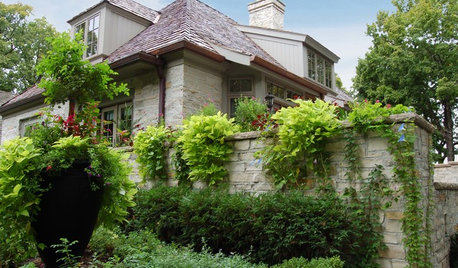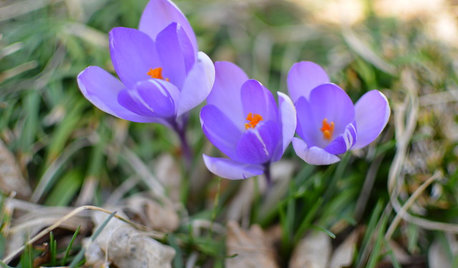Potato stolon growth?
hannah821
10 years ago
Related Stories

FOLIAGEGreat Design Plant: Ornamental Sweet Potato Vine
Versatile, fast growing, inexpensive and easy on the eyes, ornamental sweet potato vine has it all
Full Story
REGIONAL GARDEN GUIDESMid-Atlantic Gardener's March Checklist
Hunt for new growth in the garden but play the protector for baby plants and birds flying home to nest
Full Story
GARDENING GUIDESTexas Gardener's February Checklist
Show roses some love around Valentine's Day and set the stage for future garden growth with seeds and starts
Full Story
SPRING GARDENINGSummer Crops: How to Grow Strawberries
Pluck your own sweet strawberries right from the garden vine for smoothies, salads or eating then and there
Full Story
EDIBLE GARDENSSummer Crops: How to Grow Squash
Almost foolproof and with cheerful flowers, squash comes in a wide range of varieties to plant in spring
Full Story
HOUSEKEEPINGTo-Dos: Your March Home Checklist
It’s time to rid yourself of winter’s heaviness and set up for spring
Full Story
HOUZZ TOURSHouse Tour: Personality and High Style in Toronto
From basement to bedrooms to every room in between, a blogger captures the evolution of a creative and inviting home
Full Story
GARDENING AND LANDSCAPINGGarden Musts for April
There's plenty to do in your garden this month without mucking around in the mud. Think seeds and let the rain do its work
Full Story
CONTRACTOR TIPSBuilding Permits: What to Know About Green Building and Energy Codes
In Part 4 of our series examining the residential permit process, we review typical green building and energy code requirements
Full Story
FRONT YARD IDEAS10 Ideas for a Front-Yard Edible Garden Your Neighbors Will Love
Choosing attractive, well-mannered plants and sharing the bounty will go a long way toward keeping the peace
Full Story






ltilton
hannah821Original Author
Related Professionals
Citrus Heights Landscape Architects & Landscape Designers · Beachwood Landscape Architects & Landscape Designers · Hershey Landscape Architects & Landscape Designers · Roosevelt Landscape Architects & Landscape Designers · Byram Landscape Contractors · Conroe Landscape Contractors · Harvey Landscape Contractors · Inglewood Landscape Contractors · Kaneohe Landscape Contractors · Lynn Landscape Contractors · New Braunfels Landscape Contractors · Oxnard Landscape Contractors · Petaluma Landscape Contractors · Yuba City Landscape Contractors · Bensenville Landscape Contractorsdigdirt2
pnbrown
digdirt2
seysonn
ltilton
Ohiofem 6a/5b Southwest Ohio
pnbrown
seysonn
digdirt2
ltilton
jonfrum
changingitup
Ohiofem 6a/5b Southwest Ohio